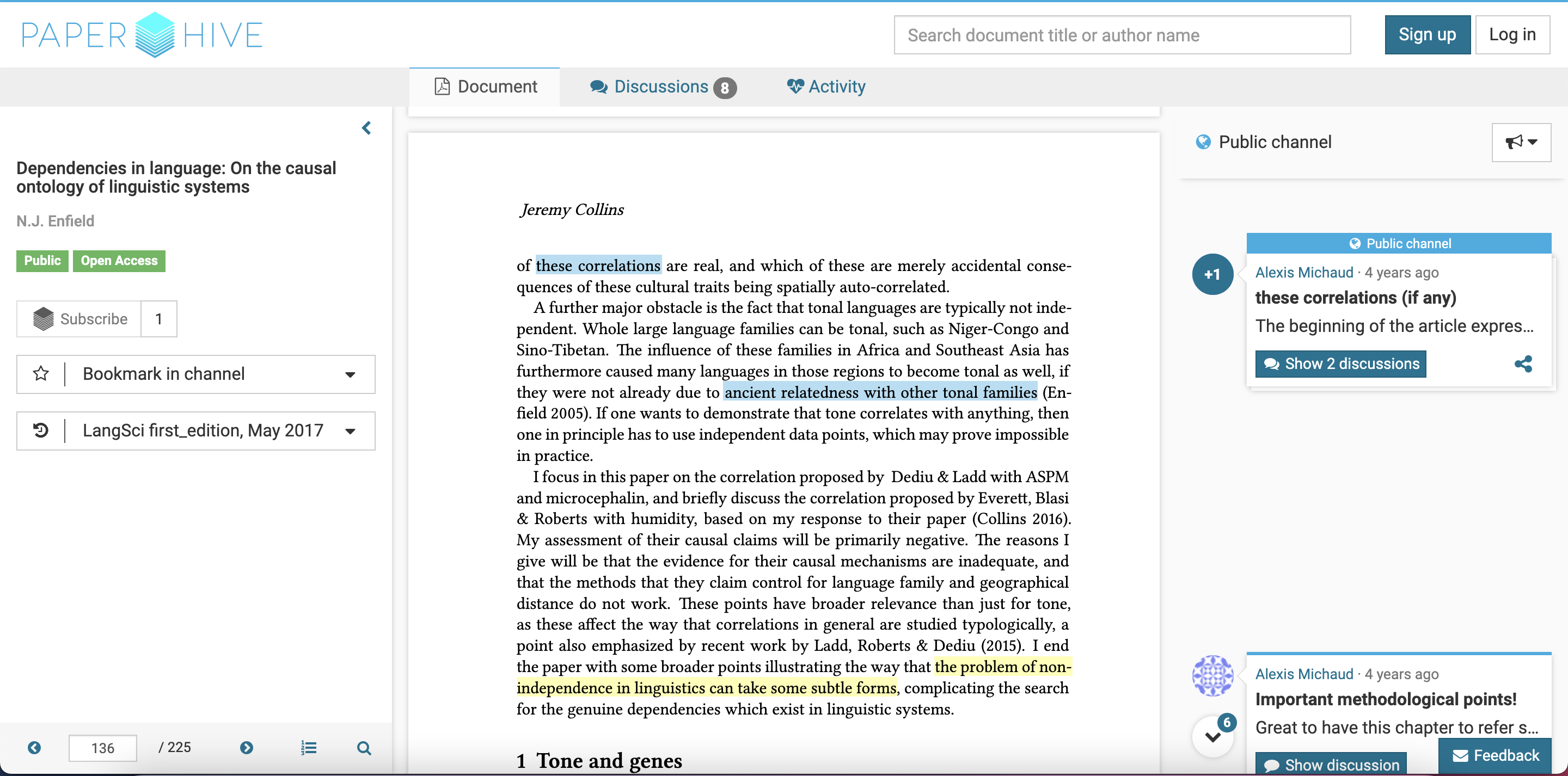- Published on
Collaborative annotations for preprint repositories
- Author
- Name
- Alex Naydenov
- Title
- Head of Sales at Hygraph
Preprint repositories like arXiv, SSRN and Zenodo have become an integral part of the research workflows in their respective disciplines. University repositories and initiatives like bioRxiv and the preprint servers supported by the Open Science Framework are following in their footsteps. Authors expect fast dissemination of their results and feedback for improving their manuscripts. Readers would like to easily discover new research without barriers and with some indication of the validity of the results.
While repositories have been successful in speeding up dissemination and discovery, facilitating the interaction between authors and readers has been a technological challenge. Feedback and exchange have thus been impeded. Recent developments in web-technology, however, have made advances around real-time communication possible and much more affordable.
PaperHive, a young company founded at the Technical University of Berlin, enables researchers to discuss and annotate academic texts in collaboration with their colleagues and the wider academic community. Collaborative annotations are the technology that can help repositories and publishers sustain a community of recurring authors and readers. PaperHive offers a layer of communication on top of articles and is easily integrated with repositories via an interactive widget. To enable PaperHive repositories and publishers only need to provide metadata for their content in some standard format (e.g., via OAI PMH or Crossref). The PaperHive widget (an iframe or a script) can be added with a single line of code to the repository web page.
PaperHive enables authors to collect structured feedback to correct mistakes and improve their articles. They can manage private discussions with their research groups or public conversations with other experts. Authors can answer questions in context, help their readers and increase the visibility of their results.
Readers can contribute reviews, ideas, links to related research and constructive criticism. By engaging with other researchers they can understand complex new concepts much faster. Public annotations assess and improve the quality of research texts. Moreover, the ability to engage in contextual conversations lowers the barrier for emerging scholars to get involved in the scientific discourse.
Collaborative annotations can also be used for review purposes. For instance, the open access publisher Language Science Press uses PaperHive for manuscript peer review, community proofreading and post-publication discussions.
Books in the proofreading phase often attract up toseveral hundred annotations.
Public annotations on PaperHive are citable, licensed under the creative commons, and follow W3C Web Annotation standards. Repositories whose content is available via with PaperHive include arXiv and OAPEN.
Bringing authors and readers closer and helping them collaborate is essential for the long-term success of institutional and not-for-profit repositories.
The article originally appeared on OpenAIRE on September 20, 2017.
